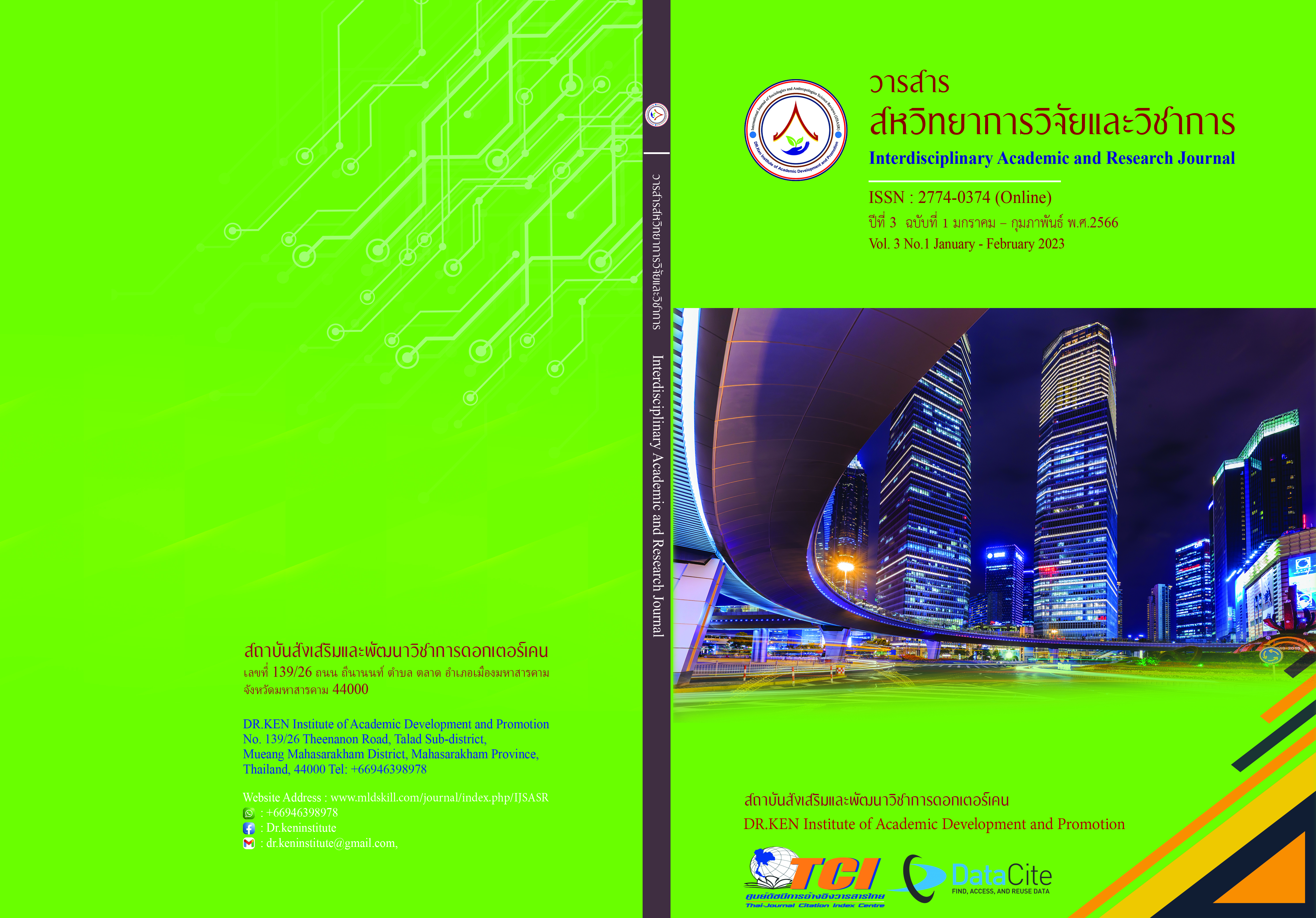Sangha Administration Strategies in the Eastern Maha Nikaya Region 9
DOI:
https://doi.org/10.14456/iarj.2023.7Keywords:
Strategies; , Sangha Administration; , Maha Nikaya Region 9Abstract
Buddhism is regarded as an invaluable heritage of Thailand as a spiritual anchor that brings unity and national security. The administration of the Sangha in Thailand in modern times is divided into the following Sangha administrative structures; (1) Commander, there is His Holiness the Supreme Patriarch is the head of the Sangha and the supreme commander, and (2) Central Administrative Organization, with the Sangha Council, which is the highest administrative organization. Thus, this research has 2 folds of objectives; (1) to study the current state of desirable conditions in the Eastern Maha Nikaya Region 9. (2) to study the guidelines of the administration strategies in The Eastern Maha Nikaya Region 9. Research methods for the target groups, 2 phases: (1) Phase 1: 77 district primates under Buddhakurumonthon 9 and 406 sub-district primates. The research tools were questionnaires on the current and desirable conditions of the Sangha administration. Under the Eastern Maha Nikaya Region 9. And (2) Phase 2 Conducted research in 3 stages, which were workshops by the expert symposium and public hearings, the statistics used in data analysis were mean and standard deviation. The findings found that: (1) revealed that the current state desirable conditions in The Eastern Maha Nikaya Region 9 at the highest level, a current condition in order of importance were education, governance, education welfare, Propagate, Public Facilities, and Public Welfare, desirable conditions in order of importance were education welfare, governance, education, Public Facilities, Propagate, and Public Welfare. And (2) Administration Strategies for Ecclesiastical District in The Eastern Maha Nikaya were (A) Knowledge management, (B) Proactive public relations, (C) Technology upgrading, (D) Promotion education, and (E) Developing a participation system.
References
กรมการศาสนา, กระทรวงวัฒนธรรม. (2562). ประวัติความเป็นมา ของพระพุทธศาสนา และองค์การศาสนาต่าง ๆ ในประเทศไทย. Retrieved on November 1, 2019 from http://sys.dra.go.th/
ประกิต บุญมี และคณะ. (2559). การบริหารกิจการคณะสงฆ์: ศึกษากรณีเขตการปกครองคณะสงฆ์ ตำบลท่าไม้ จังหวัดสมุทรสาคร. คณะนิติศาสตร์ มหาวิทยาลัยราชพฤกษ์.
พระครูปลัดกิตติวัฒน์ (คชา ปญฺาธโร). (2554). การบริหารจัดการวัดของพระสังฆาธิการในอำเภอบางเลน จังหวัดนครปฐม. วิทยานิพนธ์พุทธศาสตรมหาบัณฑิต (พระพุทธศาสนา): มหาวิทยาลัยมหาจุฬาลงกรณราชวิทยาลัย.
พระครูรัตนญาณวิมล (มนตรี รตนญาโณ). (2556). การบริหารกิจการคณะสงฆ์ในเขตอำเภอกระสัง จังหวัดบุรีรัมย์. วิทยานิพนธ์พุทธศาสตรมหาบัณฑิต(พระพุทธศาสนา) : มหาวิทยาลัยมหาจุฬาลงกรณราชวิทยาลัย.
พระครูสังฆรักษ์เกียรติศักดิ์ กิตฺติปัญญโญ. (2560). กลยุทธ์การบริหารองค์กรสงฆ์ที่เข้มแข็งในยุคโลกาภิวัตน์. วารสาร มจร สังคมศาสตร์บริทรรศน์. 7 (1), 99-115.
พระธวัชชัย จารุธมฺโม (ศรีสุข). (2554). ประสิทธิภาพการบริหารกิจการคณะสงฆ์ : กรณีศึกษาวัดใน อำเภอหนองแซง จังหวัดสระบุรี. วิทยานิพนธ์พุทธศาสตรมหาบัณฑิต (รัฐประศาสนศาสตร์): บัณฑิตวิทยาลัย มหาวิทยาลัยมหาจุฬาลงกรณราชวิทยาลัย.
พระมหานพดล นวคุโณ (ถ่อนสันเทียะ). (2560). รูปแบบการบริหารกิจการคณะสงฆ์สู่ความเป็นเลิศของพระสังฆาธิการระดับเจ้าอาวาส. วารสารบัณฑิตศึกษาปริทรรศน์. 13 (3), มิถุนายน 2560.
พระอนุชา ธมฺมวโร (วงษ์ประพันธ์). (2556). ประสิทธิภาพการบริหารกิจการคณะสงฆ์ของวัดในอำเภอเมือง จังหวัดขอนแก่น. กรุงเทพฯ : บัณฑิตวิทยาลัย มหาวิทยาลัยมหาจุฬาลงกรณราชวิทยาลัย.
พีรัชชัย วีระสุนทร. (2551). กฎหมายว่าด้วยการปกครองคณะสงฆ์ไทย. กรุงเทพฯ : มหาวิทยาลัยอัชสัมชัญ.
ไพศาล วรคำ. (2555). การวิจัยทางการศึกษา. พิมพ์ครั้งที่ 5. มหาสารคาม : ตักสิลาการพิมพ์.
สุวัฒสัน รักขันโท. (2558). รูปแบบภาวะผู้นำเชิงกลยุทธ์เพื่อการบริหารกิจการคณะสงฆ์. ปริญญาดุษฎีบัณฑิต สาขาวิชาภาวะผู้นำและนวัตกรรมทางการศึกษา: มหาวิทยาลัยสงขลานครินทร์.
Downloads
Published
How to Cite
Issue
Section
License
Copyright (c) 2023 พระอัชยา ฉฺนทสุโภ

This work is licensed under a Creative Commons Attribution-NonCommercial-NoDerivatives 4.0 International License.
Copyright on any article in the Interdisciplinary Academic and Research Journal is retained by the author(s) under the under the Creative Commons Attribution-NonCommercial-NoDerivatives 4.0 International License. Permission to use text, content, images, etc. of publication. Any user to read, download, copy, distribute, print, search, or link to the full texts of articles, crawl them for indexing, pass them as data to software, or use them for any other lawful purpose. But do not use it for commercial use or with the intent to benefit any business.
















.png)


